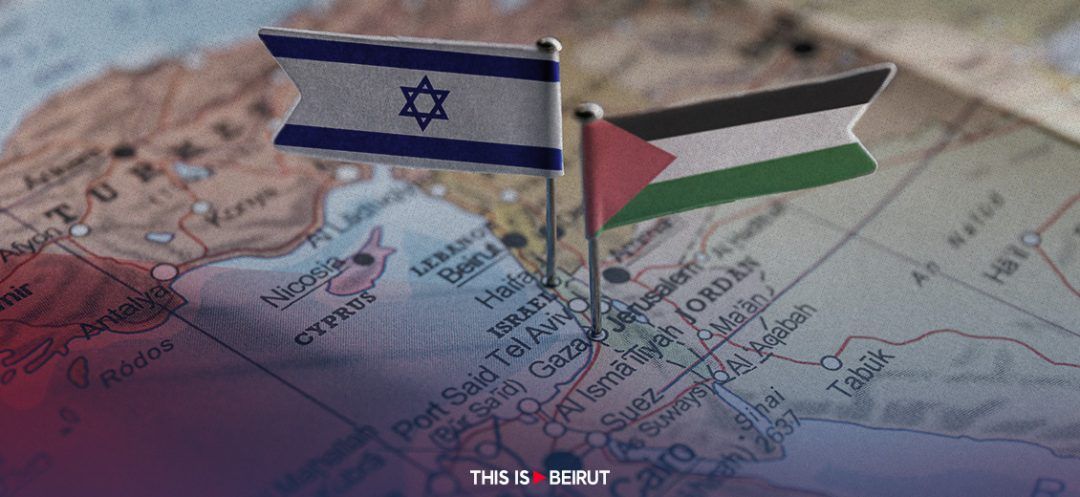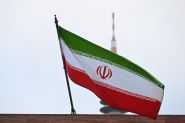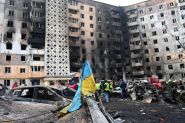- Home
- Middle East
- Political Vignettes and Ongoing Conflicts

Sergei Shoïgu, the Russian minister of defense, surmises French responsibility behind Moscow’s terror attack since Ukrainians are masterminded by their European mentors and France has defied the moral and political arrogance of the dictator. Relaying the lies of the Russian autocrat, S. Shoïgu perpetuates the culture of dissembling and official propaganda bequeathed by the Soviet era and rehabilitated under Vladimir Putin. The same pattern of state lies applies to the Iranian regime and its regional clones and allies. The instrumentalization of war tragedies promotes destructive power politics and conceals the ugly designs and facts that account for their true plots, unfolding, and consequences.
The conflict in Ukraine is thriving on a thick web of lies and conspiracy theories that have nothing to do with the true motivations: Putin’s denial of Ukraine’s national legitimacy, his neo-imperial drive towards his immediate neighbors (Ukraine, Georgia, the Baltic States, and Poland), and his determination to derail the European community and reset the Soviet clock. Europe and the transatlantic community have no choice but to strengthen Ukraine’s defenses, to contain Russia’s strategic inroads, and to solidify the European and American consensuses as the ultimate safeguards for a negotiated solution.
This gigantic maneuver is meant to dispel his deep-seated fears regarding a declining Russia and its geopolitical hazards, shift the blame on Western democracies, and try to regain a strategic foothold at the expense of the European Union and its transatlantic Lebensraum and strategic safeguards while doubling down on internal repression. The external warmongering betrays the underlying anxieties elicited by the incremental liberalization of Russian society and the increasing demand for democratization. Otherwise, his purported accusation of NATO, the US, and the EU for strategic encroachments and political subversion is a sheer lie contrived to justify the neo-totalitarian gravitation.
Amnesty International reports 853 political executions in Iran while pursuing its aggressive warmongering throughout the Middle East, reciting the litany of Western conspiracy and denouncing the “Western pollution” (Gharb Zadegui - غرب زادكى) and their imprints on the youth subcultures. The bankrupted revolutionary saga is decaying and wearing out, and nobody is inclined to give it credence. The neo-imperial drive and the rush into military nuclearization are the functional equivalents of the debunked Islamic narrative and bankrupted governance. The highly challenged Islamic republic ties its future to geopolitical destabilization and the disruption of international normalization. October 7, 2023, in southern Israel is the culmination of a disruption strategy that has swept across the Gulf and the Near East, igniting civil wars, ethnic cleansing, organized criminality, dysfunctional governance, and endemic instability.
The Arab Spring interlude in 2011 was spiked intentionally by Saudi and Iranian imperialisms that dreaded the reformist tide and the erosion of the Islamic rallying cry. Ever since, Saudi Arabia has dramatically shifted its course towards systemic reforms (economic, political, geopolitical, social, cultural, religious, educational, environmental, etc.) while reconciling with Iran, engaging in multilateralism and regional conflict resolution, and starting a new vein of Arab politics based on accommodation and consensual politics. Whereas, Iran, sheltered by its reconciliation with Saudi Arabia, launched a spate of subversion dynamics that engendered endemic instability, institutionalized chaos, frozen conflicts, political wastelands, and franchised organized criminality. The reckless and criminal undertaking of Hamas tragically highlighted the instrumentation of the Palestinian cause by Iranian power politics and its disastrous humanitarian, political, and economic outcomes.
The Palestinians have no chance to extricate themselves from the destructive cycle of nihilistic violence unless they work diligently on wresting back a modicum of moral and political autonomy, which helps them overcome their state of alternate dependencies, despondency, and inability to overcome their evolving fractiousness. Their only chance is to get their act together and reengage Israel, based on a cumulative legacy of peace agreements and active mediations, to finalize a peace treaty and build an incremental confidence-building trajectory despite the heavy backlog of unattended contentions and cyclical violence. Their moral and political autonomy proceeds invariably through the negotiated search for a viable and equitable solution to their longstanding conflict with the state of Israel. The state of mental restraint should be overcome and give way to the leap of faith that is needed at a time when the prospects of peace are at rock bottom. However destructive the actual state of conflicts, it might be the springboard for a new stage of negotiations to address the lingering issues of a stalemated and protracted conflict.
Israel has to deal with its increasing national dilemmas while the confrontation with Iran and its surrogates in Gaza and southern Lebanon continues its course. The combined political crises occasioned by the war and its antecedents reflect the deepening ideological differences between liberal Israelis, the messianic and ultra-nationalist Right, the highly divisive figure of Benjamin Netanyahu and his controversial political legacy, the strategic threats posed by Iranian subversion politics, the identity crises elicited by the dilemmatic markers of Israeli national identity (Zionist, post-Zinonist, Jewish vs. Israeli identity, etc.), and the compounded effects of the protracted war and its alternatives.
However, Israelis, notwithstanding their political and ideological affiliations, are unanimous in their determination to eradicate the strategic threats on their southern and northern borders and secure their borderline communities. Nonetheless, they are still undecided about the incoming political courses, namely, the future of political negotiations with Palestinians as a prelude to the normalization with the community of Arab States initiated by the Abrahamic accords and their partnerships. The outcomes of the current war are, obviously, decisive about the future political evolutions related to the resumption of negotiations regarding the issues of mutual acknowledgement, dual statehood, strategic security, and economic cooperation.
The Lebanese operational theaters and their Syrian ancillaries reflect the ambiguities of an imploded Arab State system, the clashing agendas of Iranian and Russian power politics, the travails of the frozen Syrian conflicts, and their domestic, regional, and international ramifications. Otherwise, the unraveling of Lebanese statehood and its instrumentalization by Iranian power politics have, altogether, transformed the Lebanese territories into platforms for surrogate and open-ended conflicts. Hezbollah’s political theodicy and its nihilistic propensities have doomed the prospects of conflict resolution, diplomatic mediation, and political normalization. The Hezbollah warmongering is inevitably leading to a total war scenario unless the 1701 and 1509 resolutions are implemented as the prelude to a progressive restoration of Lebanese sovereignty. However doubtful this scenario is, it remains the unique alternative to the country’s disintegration and the unraveling of whatever is left of the Near Eastern geopolitical order.
The various recapitulated facets of the current regional and international conflicts highlight the ideological, geopolitical, and “emotional” fault lines of disintegrating regional and international political orders and their interfaces. The obstacles to effective mediation are not, by any chance, casual; they reflect the breakdown of international consensuses, the scope of renascent imperialisms, and the proliferating conflicts at their heels. The totalitarian nature of the rising conflicts is not a minor feature but a defining ideological marker and strategic course along which the new dynamics and counter-dynamics are evolving.
Read more



Comments